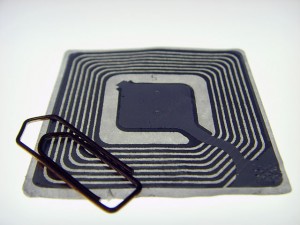The smart web
Has your fridge tweeted lately?
It might sound a bit funny, but shortly, not only your fridge, but most of your household appliances, your car, and even your house will be connected to the internet, and part of what we call ‘the smart web’. The smart web is the name given to the developing trend to have all electronic devices connected to the internet in order to communicate and send and receive data. At a simple level, all new cars these days have computers in them. They monitor fuel consumption, check that the engine’s working properly and warn you if there is a problem. Well, that car spends its evenings in your garage, which is probably covered by your wireless network. The smart web means that your car can cut out the middleman and connect directly to your mechanic’s computer system to let it know how everything’s tracking for the coming service. It might let them know that there is only an oil change required, or that two new tyres are needed so you better order them.
Smart shopping
You can do the same with fridges and the smart web: when you finish an item from the fridge, scan the barcode using the scanner on the door, and the fridge will add it to your online shopping list, which you can then login to, adjust, and complete the order for pickup or delivery. Saves time, and means your order is personalised to exactly what you need.
Radio Frequency Identification (RFID)
 The idea of gains in either efficiency or in personalisation are two good places to start talking about the smart web with respect to education. A number of schools now have RFID library systems. No barcodes are scanned; a pile of books is simply placed on a reader pad and the radio frequency of the tag inside the book lets the catalogue know which items have been presented, and issues them accordingly. Library books are an obvious starting point, but soon we’ll have RFID tracking for all resources in school. With readers in traffic areas of a school, we’ll know exactly where the portable data projector is, or the DVD player. And if you’ve ever wandered around a school looking for something like that, I’m sure you’ll appreciate it. Some schools have also started using the smart web for taking the roll, which a teacher then checks and confirms. The teachers find this easier and faster, and have more time to spend on teaching.
The idea of gains in either efficiency or in personalisation are two good places to start talking about the smart web with respect to education. A number of schools now have RFID library systems. No barcodes are scanned; a pile of books is simply placed on a reader pad and the radio frequency of the tag inside the book lets the catalogue know which items have been presented, and issues them accordingly. Library books are an obvious starting point, but soon we’ll have RFID tracking for all resources in school. With readers in traffic areas of a school, we’ll know exactly where the portable data projector is, or the DVD player. And if you’ve ever wandered around a school looking for something like that, I’m sure you’ll appreciate it. Some schools have also started using the smart web for taking the roll, which a teacher then checks and confirms. The teachers find this easier and faster, and have more time to spend on teaching.
Making sense of the world
This avalanche of data pouring out of our cars, fridges, TVs, and washing machines also has a lot of potential for creating meaningful authentic learning for students. Think about the what we could do with a study on regional variations in the weather if we knew the outside temperature at all of the homes of our students—and if we could map these in real time in class. How much would our students’ understanding of geography and its effect on the weather grow if they were exploring their own house? Or think about petrol consumption, or traffic flows, or city planning if our cars used GPS and the smart web to reveal traffic patterns? Most cars have at least one GPS in them these days considering all smartphones are actually GPSs.
Drivers for this trend
- Social: Internet-capable consumer appliances, geo-location devices
- Technology: RFID technologies
- Educational: Convergence of internet-enabled devices in the classroom
Coming soon
I always know the exact temperature at my house, not because my house is part of the smart web, but because one of my neighbours has rigged up a weather station that’s connected to his wifi network, which tweets the humidity level, temperature, wind speed, and how much rain we’ve had. So the smart web means that if your fridge isn’t tweeting, something else will be, in the not too distant future.
Learn, participate, and share
CORE staff are using Bundlr to collate links to articles and information relating to the Smart Web in a Bundlr collection. There is the option for you to choose to follow the growing collection over the next few months.